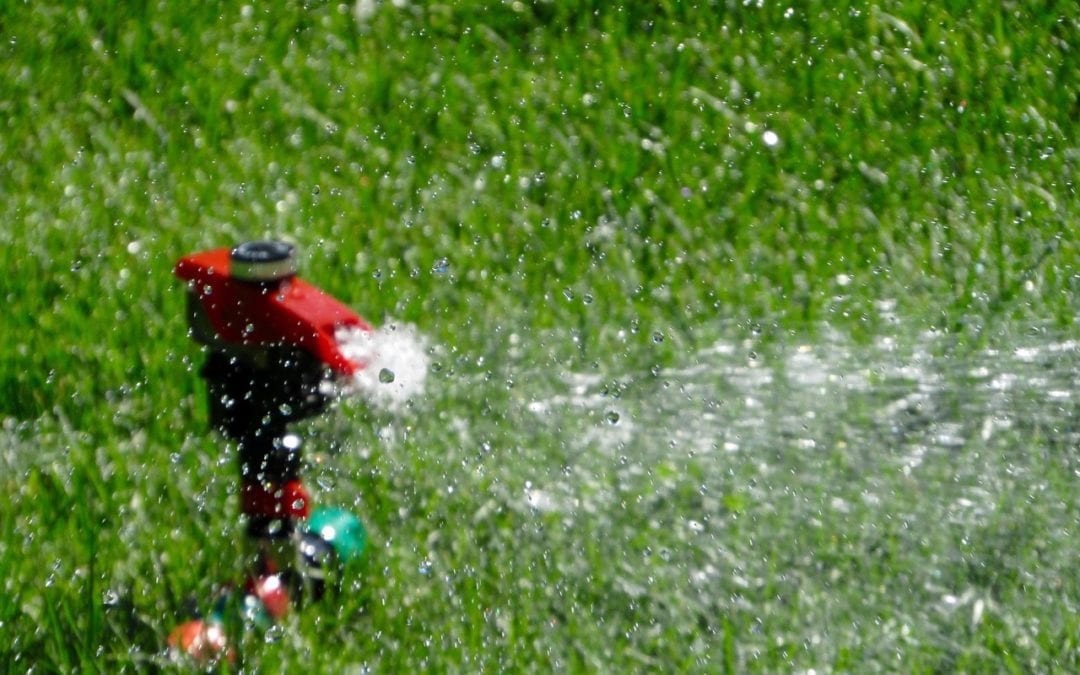The question of how often you should be watering your lawn comes up often at Rainbow Gardens. We’ll give you the best tips on this page, along with the reasons why you should follow them. There really is no true formula for watering your San Antonio lawn due to many variables that will affect your watering schedule. What we can offer are some suggestions and information to help you discern when your lawn needs the water.
The following are extremely general guidelines for watering your lawn through the different seasons:
- -Water once a week in spring
- -Water every 3-4 days in summer
- -Water once a week in fall
- -Water only as needed in winter
Remember, these are guidelines. How often you need to water depends on multiple factors and these guidelines cannot be considered set rules. We could have an excessive amount of rain in spring or fall. Maybe there’s been more cloudy days which would allow you to stretch the days further between watering. Or, perhaps there has been no rainfall for an extended amount of time so water would need to be applied more often. There could be water restrictions in place. Maybe you have a soil type that holds moisture longer. Maybe your soil is compacted and you have a lot of runoff making you need to water more frequently. See how the question of how often you should water your lawn can make both of us crazy? You have to take all these factors into account and then be observant about your own lawn and make the judgment call. However, there are a few things we know for a fact about watering your lawn that can absolutely help you.
Best Practices for Watering Your Lawn:
- -Morning is ALWAYS the best choice for the time to water. This helps ward of fungal diseases that appear and get exacerbated by nighttime watering.
- -Keep your sprinkler systems maintained and positioned low to the ground. This will give you peace of mind that you are watering efficiently and effectively. A broken or misaligned sprinkler head can waste water and money. And sprinklers positioned too high can cause the water to drift in the wind and evaporate before getting into your turf soil.
- -Depending on your type of soil, you may need to water in intervals. Test how long you can water until you see run off, then set the timer to go off right before that. Wait about 20-30 minutes and run the system again. You’ll be allowing the water time to soak into the soil.
- -As always when watering most plants, water deeply to encourage strong and deep root growth.

Signs You Should Be Watering Your Lawn:
- -You can see your footprints in the grass when you walk across it.
- -The blades of grass are beginning to roll or fold up.
- -The color fades and is drab and no longer vibrant green.
Signs Your Lawn is Getting Too Much Water
- -Fungal Disease is rearing its ugly head. See our guide for turf fungus issues.
- -You aren’t seeing your footprints, but you are definitely hearing them squish through the soggy grass.
- -You notice a ton of runoff. This could be because your turf soil is already soaked and simply cannot absorb any more water. (Runoff could also be a sign that your soil is compacted, and that you need to water in those interval amounts noted above.)
- -Lawn looks wilted. Although this is a sign also of a lawn that needs water, if you have been watering a lot and the grass still looks wilted, chances are you need to lay off for awhile.



Our St Augustine grass doesn’t seem to grow runners. We have tall cedar elm trees so maybe not enough sun?
It is quite possible that a lack of sunlight is the problem. While St. Augustine is the most forgiving of our turf grasses when it comes to shade exposure, a lack of sunlight can still be a problem with healthy growth. Do you fertilize in spring and fall?
With the winter storm hitting. When should I start to water my lawn? It looks so brow and sad.
Hi Rodney,
We would advise watering now if there is not enough rain in a week to supply 1″ to 1.5″ of water to your lawn. Depending on what type of lawn, and tree overhang you have protection, some lawn may be suffering freeze damage, but we kind of have to wait and see when it starts greening up.
Recommendations for lawn care for spring consists of applying pre-emergent now to prevent weeds, and fertilizing in April. See all the links for more info.